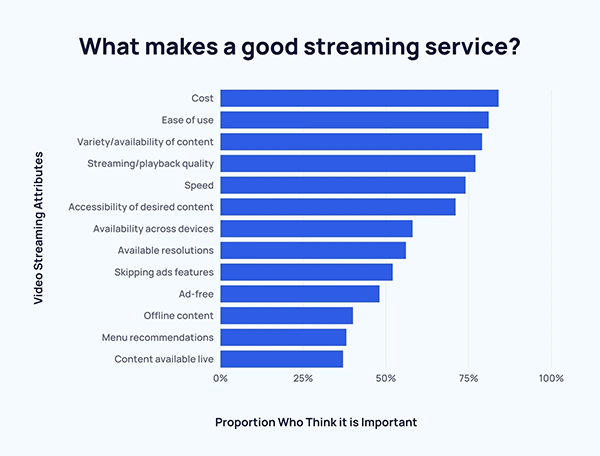We can all agree that a gigantic surge in the usage of streaming platforms has been observed since the Covid-19 pandemic. This has led to immense competition in different streaming platforms. Most companies are trying to find ways to improve their customer services and stand out in the audience’s eyes.
One such way of doing so is making the app customer-centric by customizing the app according to the user’s preferences.
EY Americas Media & Entertainment Sector Leader, John Harrison stated that ‘Customer centricity can help stream players achieve profitability by shifting focus from acquisition to maximizing customer lifetime value.’
With the growing popularity of streaming platforms, customization has become a need in this sector.
In this article, we will discuss how custom app developers are adding to the streaming service platforms and how it will be affected in the future.
Tailoring an app according to the needs of users to provide them with a pleasant experience is the main objective of Custom app developers.
Customization in streaming services provides various benefits such as a rise in engagement, better monetization opportunities, personalization in the viewing experience, scalability, security, etc. Resulting in the overall betterment of the app.
This suggests that the role of custom app developers in streaming platforms is significant.
The streamers have a set of expectations from any platform, the following graph depicts some features that a proportion of users think make a good streaming service platform.

Let’s discuss some of the roles of custom app developers in the streaming revolution in detail-
AI-driven content recommendations use machine learning to analyze your streaming history and provide you with related recommendations, saving time and effort.
It saves you from the question of “what to watch next?” You don’t need to surf channels just to find one perfect show to watch.
For example, if you like to watch thriller movies and have surfed through them once in your app, you’ll automatically get more such recommendations without any hassle.
The offline access feature allows users to download and watch a show offline according to their convenience and preference.
It is of significant help for people who travel for long hours and have limited or no data services. They can download the content at the time of better data connectivity and save it to watch it later anytime and anywhere without any interruption.
Real-time analytics can be defined as the processing of data as soon as it becomes available. It provides insights and helps in making quick and smart decisions.
In streaming services, it can be used to enhance the user experience by understanding how and what a user likes to watch, by analyzing user habits, and by ad targeting. It can also track metric issues in the app which need to be fixed.
All these factors can lead to the app’s improvement, giving it an edge over its competitors.
You might have experienced seeing a movie or show that you have recently searched for, in your recommendations. Streaming platforms often leverage data to understand and customize the app according to the user’s preferences.
The primary objective of personalization is to analyze the user activity to deliver content and services that might interest the user, with minimum effort from them.
It can also simplify transactions and processes by remembering information about a user.
To ensure seamless performance across various browsers and devices, cross-browser compatibility testing plays a crucial role.
Cross-platform compatibility is the ability of a website to operate across multiple devices. It helps OTT platforms reach a wider audience by catering to different sections of people.
It allows users to switch between different devices without losing their personalized data or history in the app.
With this feature, users can also share recommendations with friends and family.
The increase in the number of users corresponds to an increase in their demands and need for constant innovation.
It is estimated that around 4.3 billion people globally will be using streaming platforms by 2027. Seeing the surge in the number of users, the providers must invest in scalable infrastructures and qualities to deliver quality content tailored to their taste to the audience.
Here, Subscriber comprehension and personalization are essential to keep the end user interested and subscribed.
TRIVIADriven by the growing demand for on-demand video content and the rise in the number of smartphones and internet services, The global OTT market is expected to surpass $335 billion by the end of 2024.
With the increase in the number of OTT users and their demands, customization and personalization are not just choices. Customers expect everything to be customized, not only the content they are seeing but the notifications they receive and adverts they are shown should also be customized.
Customization is one of the factors that determines the relationship of the consumer with the service provider. It becomes a major feature to take care of to make a consumer come for more in the future.
With the help of custom app developers, streaming apps can stay relevant in competitive and changing times.
Platforms that show increased user understanding and experience are more likely to get ahead in the competition.
